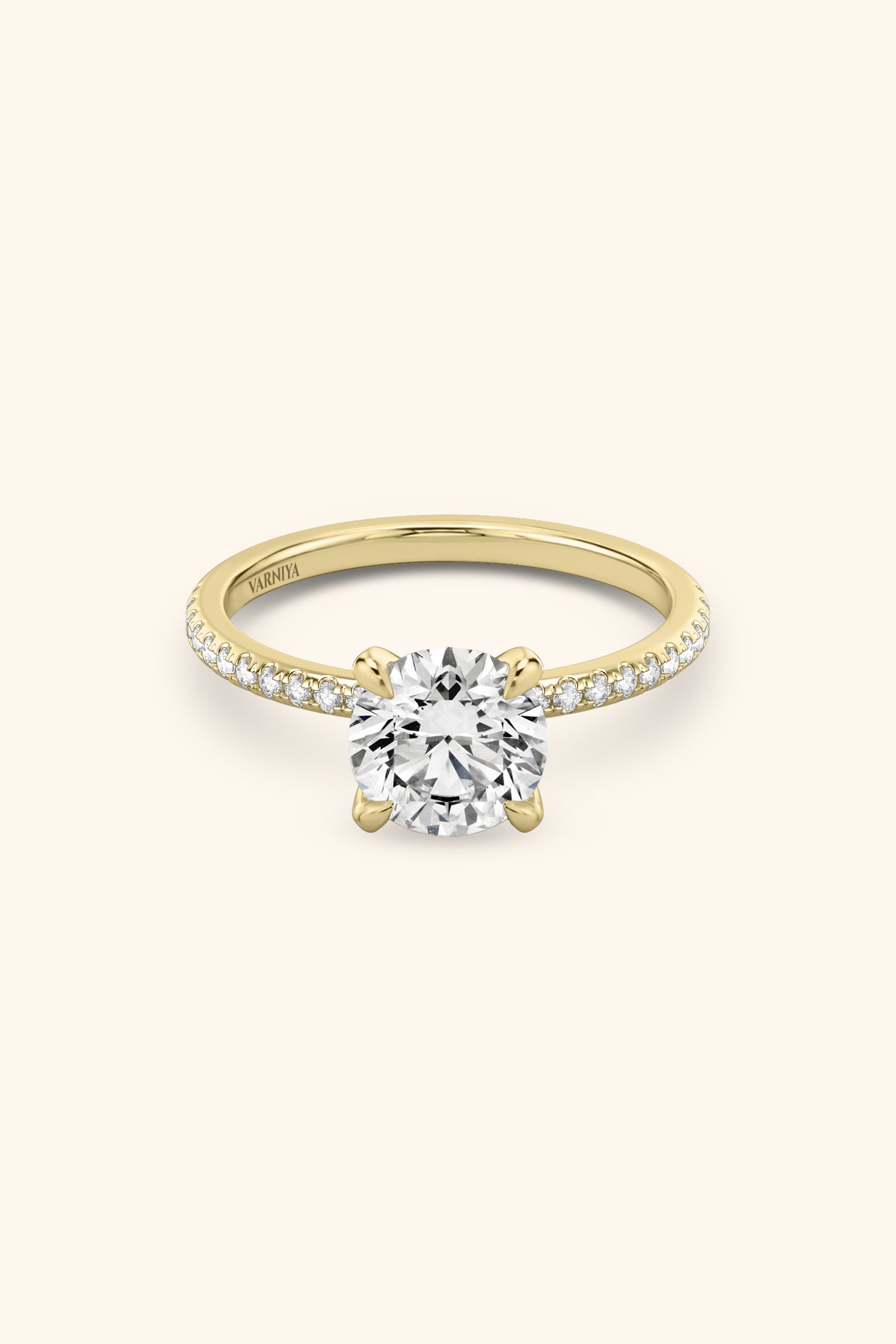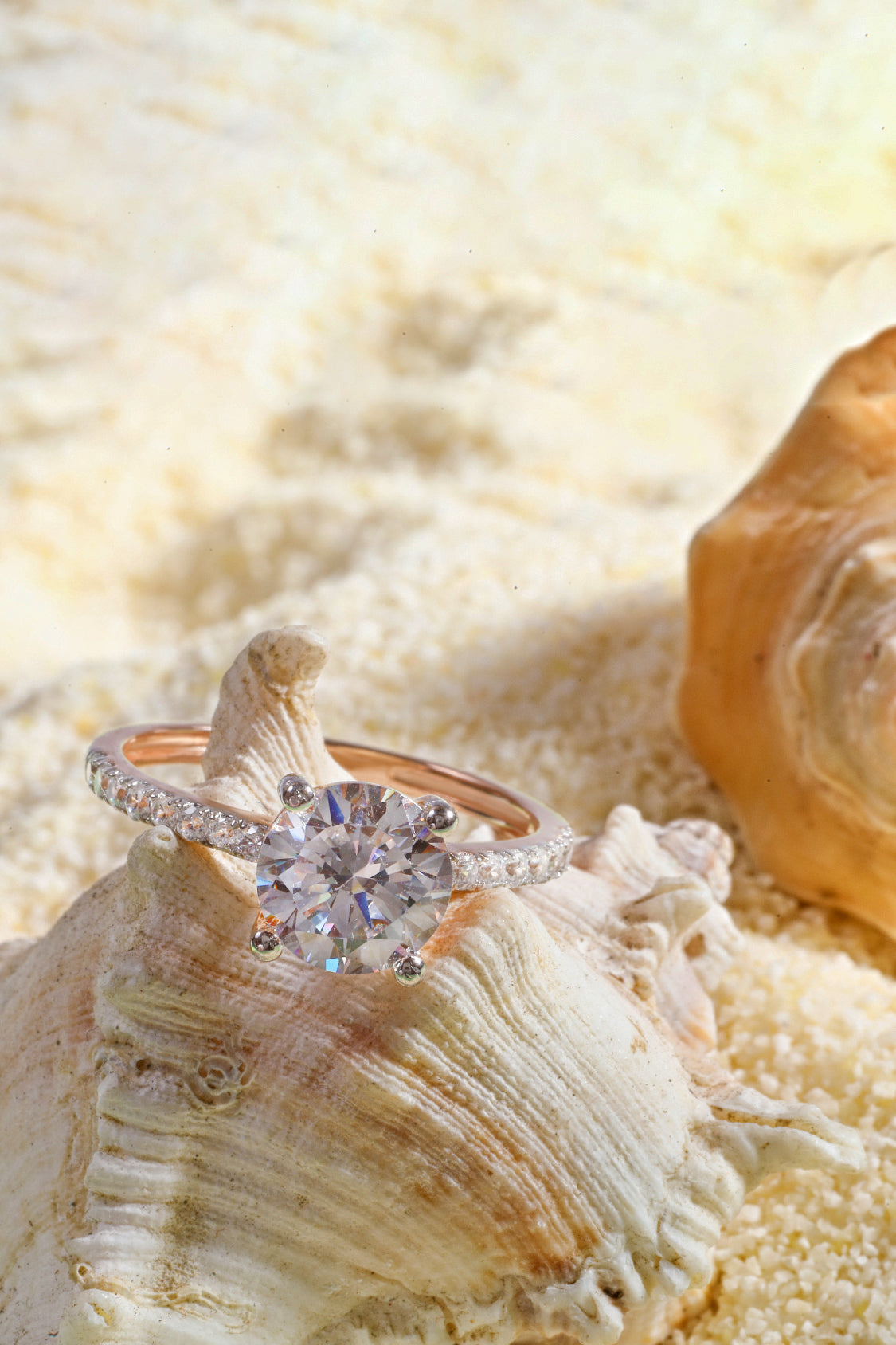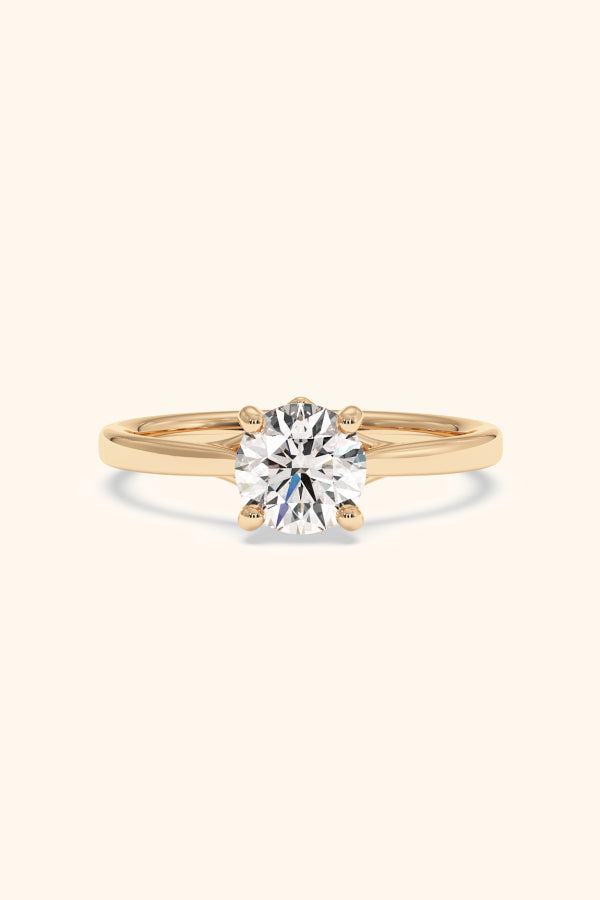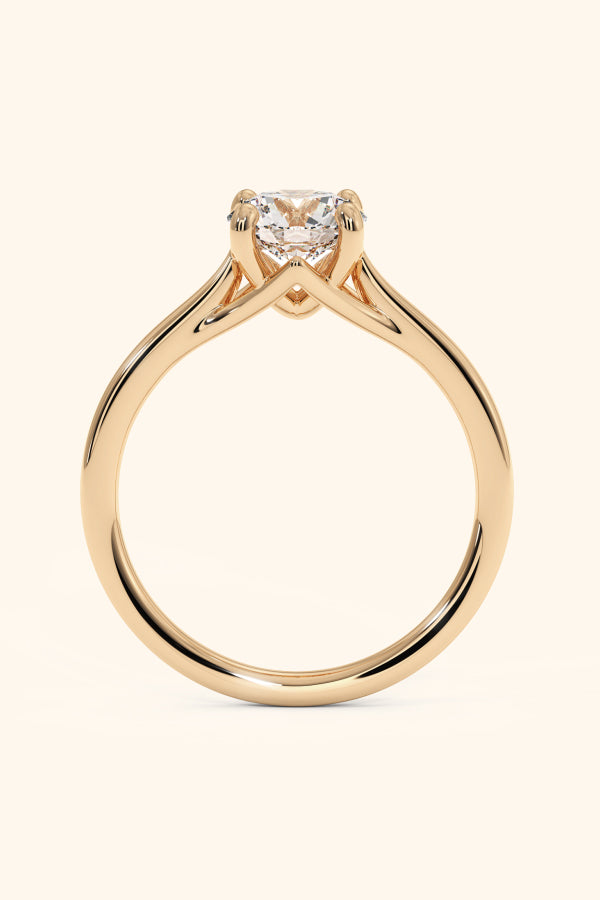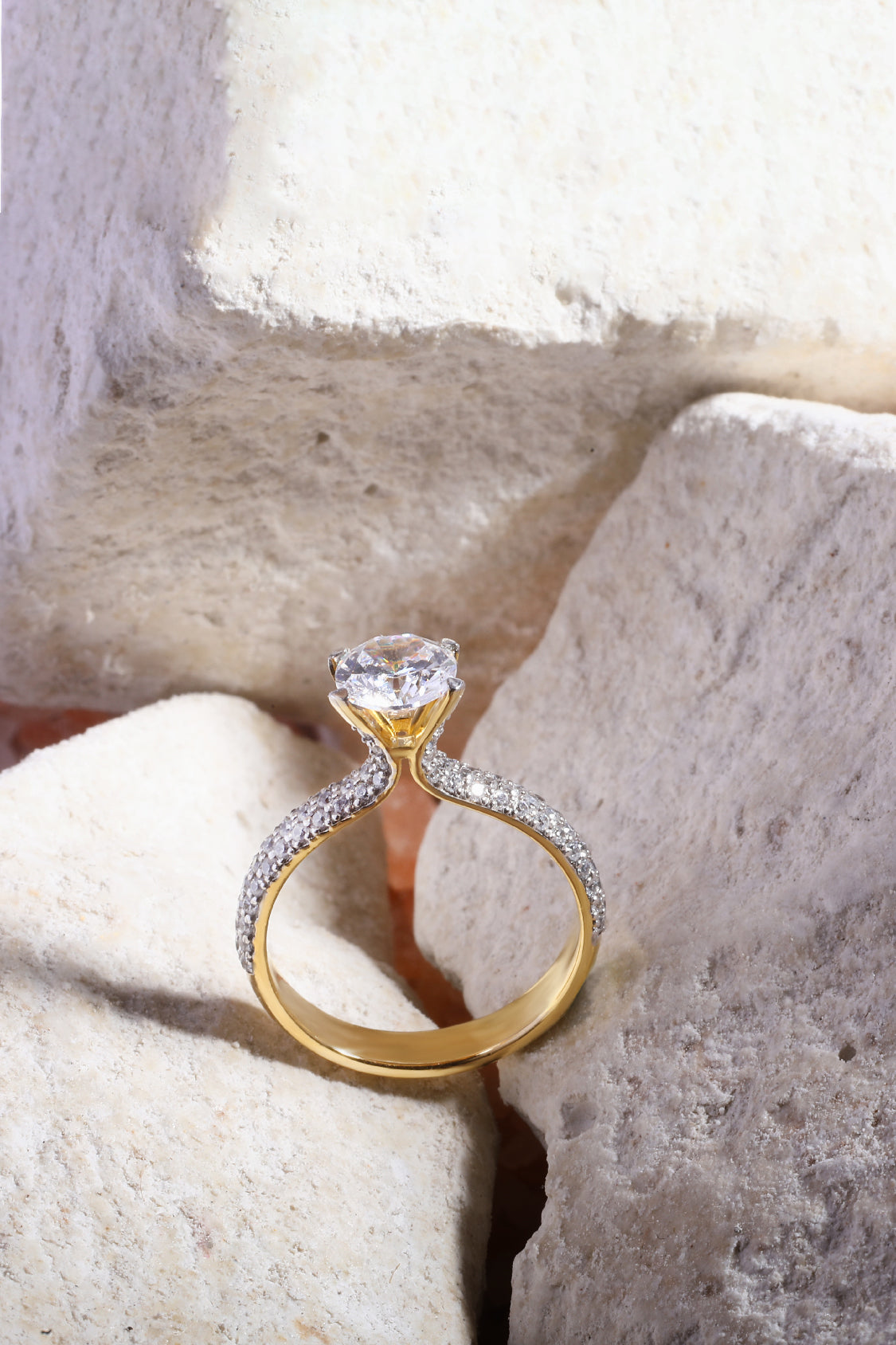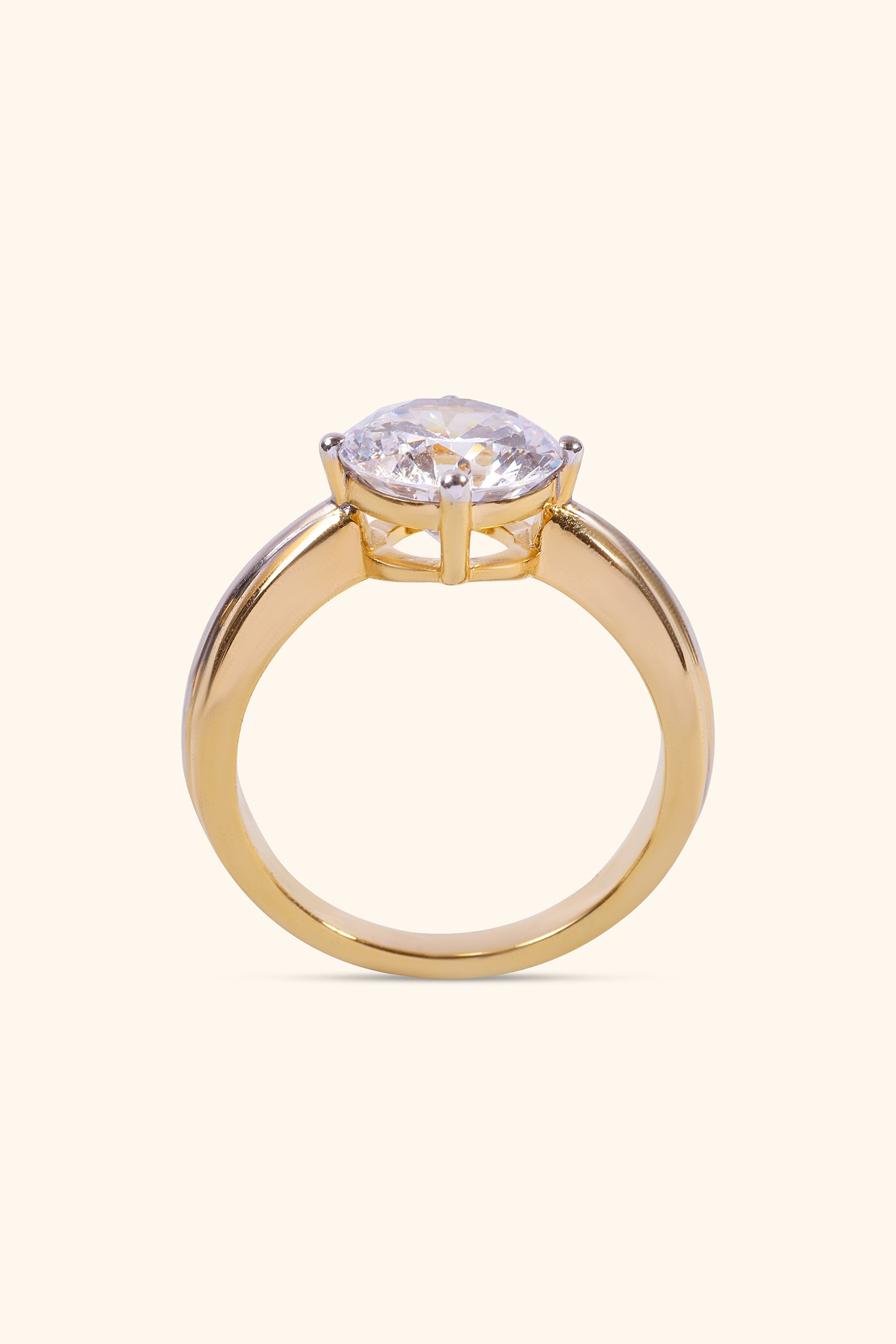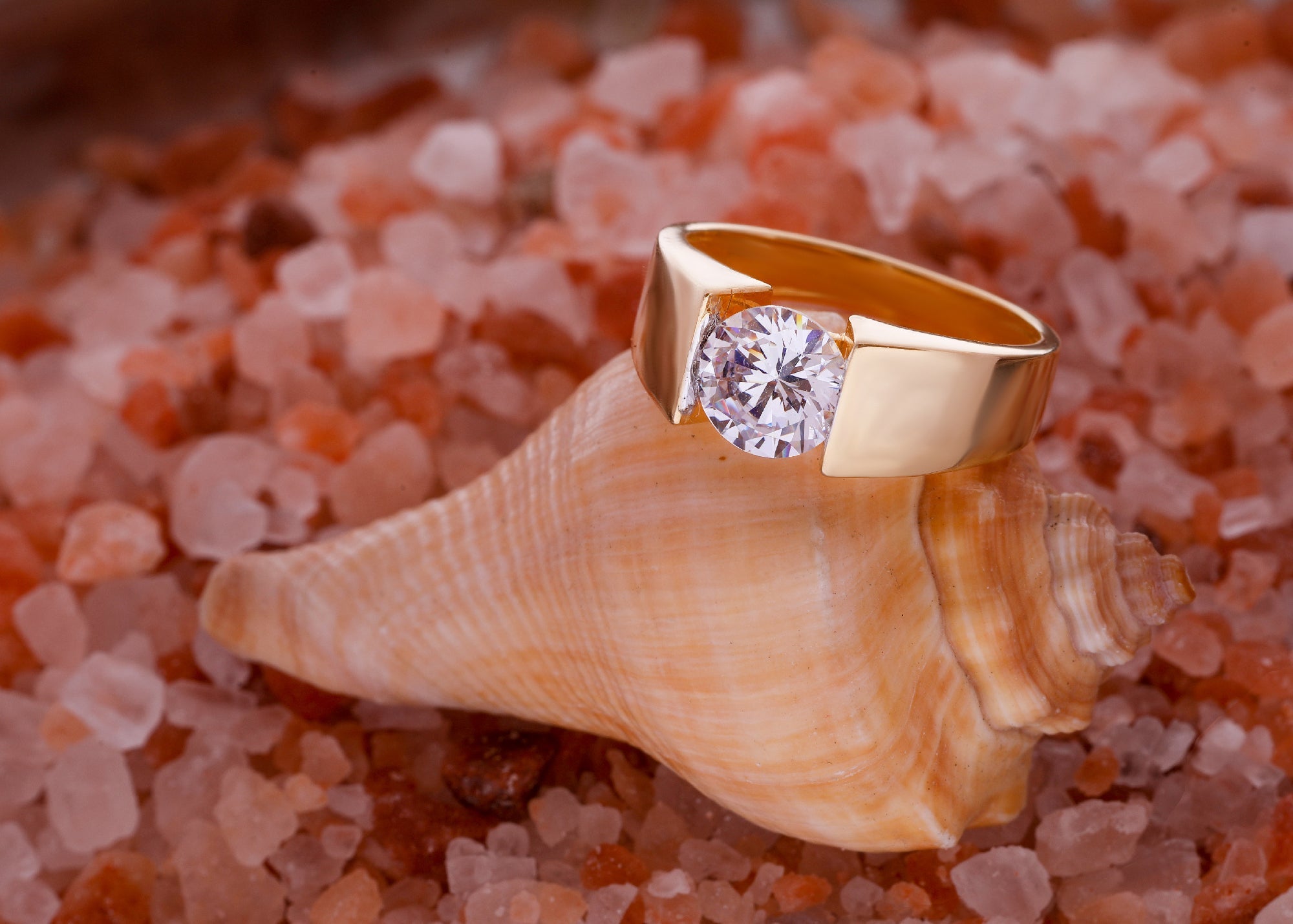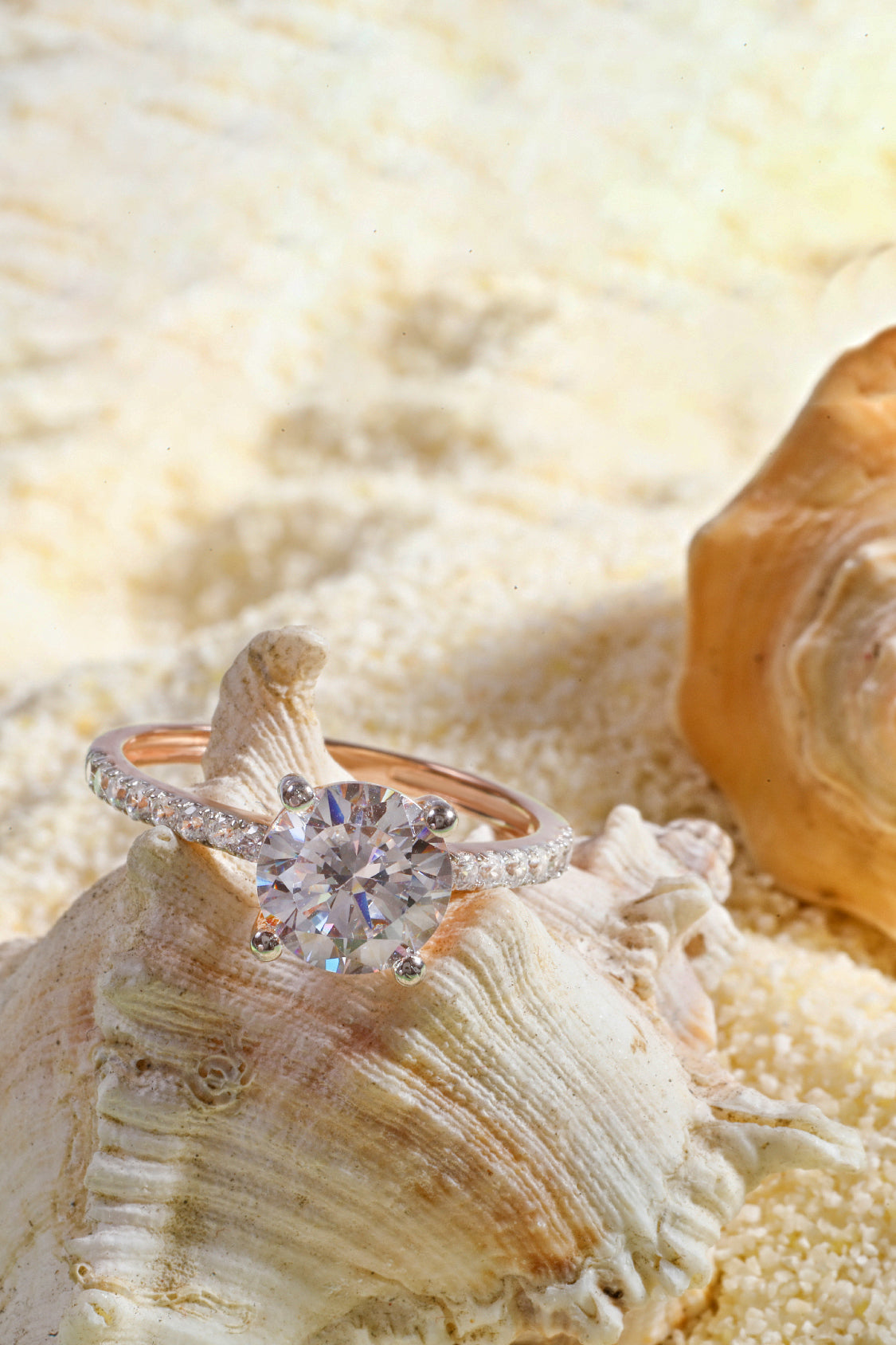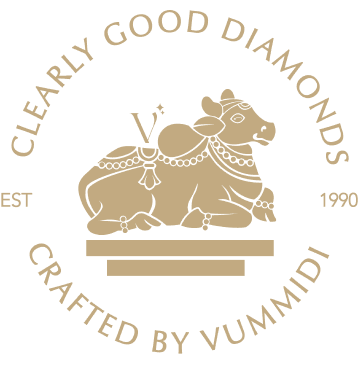
CVD Diamond Manufacturer or Natural Diamond Suppliers – Who Offers the Best Value?
Looking for the best value in diamonds? A CVD diamond manufacturer offers innovation, while natural suppliers bring tradition. Find out which suits you!
When it comes to choosing diamonds, buyers are increasingly turning to CVD diamond manufacturers for their innovative and eco-friendly options. Lab grown diamonds, particularly those produced through CVD technology, offer a high-quality alternative to natural diamonds, often at a more affordable price.
Studies show that the market for lab grown diamonds is growing rapidly, with experts predicting a 9.1% annual growth in the industry over the next few years (source: Zion Market Research). While natural diamonds have long been the standard, lab grown CVD diamonds are now being recognized for their brilliance, clarity, and ethical sourcing, making them a clear choice for many buyers.
In this article, we'll explore the differences between CVD diamonds and mined diamonds, helping you understand which option provides the best value in terms of quality, sustainability, and price.
What is a CVD Diamond Manufacturer?
A CVD diamond manufacturer creates lab grown diamonds using the Chemical Vapor Deposition (CVD) method. This advanced technique allows for the growth of diamonds in a controlled environment, providing an affordable, eco-friendly, and ethical alternative to traditional mined diamonds.
How Does a CVD Diamond Manufacturer Work?
-
CVD technology starts with placing a diamond seed inside a vacuum chamber.
-
Gases like methane are heated and broken down, allowing carbon atoms to deposit on the seed and form a diamond.
-
This method results in lab grown diamonds that are chemically identical to natural ones.
Advantages of CVD Diamond Manufacturing
-
Eco-friendly: Eliminates the environmental costs of diamond mining.
-
Affordable: Generally costs less than mined diamonds due to lower production costs.
-
High Quality: CVD diamonds have the same brilliance, clarity, and carat as natural diamonds.
How Lab Grown Diamonds Are Made Using CVD Technology
CVD technology is a precise and controlled method of growing diamonds, ensuring that each stone meets high-quality standards.
The CVD Diamond Creation Process
-
Diamond Seed: A small diamond seed is placed inside a vacuum chamber.
-
Carbon Source: Gases like methane are introduced and heated to break them down into carbon atoms.
-
Diamond Growth: The carbon atoms gradually deposit on the seed, forming a full diamond layer by layer.
Key Benefits of Lab Grown Diamonds
-
Optically identical to natural diamonds: Same brilliance and clarity.
-
Ethical production: No need for traditional diamond mining, making them a conflict-free option.
-
Environmentally friendly: CVD diamonds have a positive impact on the planet compared to mined diamonds.
The Role of a CVD Diamond Manufacturer in the Diamond Industry
A CVD diamond manufacturer plays a critical role in transforming the diamond industry by offering lab grown diamonds that provide an ethical and affordable alternative to mined diamonds.
How CVD Manufacturers Contribute to the Industry
-
Advanced Technology: They use cutting-edge technology to produce diamonds that meet the highest quality standards.
-
Variety of Options: CVD manufacturers offer different varieties of diamonds, including various shapes, sizes, and clarity levels.
-
Customization: Customers can choose from a wide range of diamond seed types, colors, and carat options.
Why CVD Diamonds Are Becoming Popular
-
Affordable and cost-effective: Lab-grown diamonds are typically priced lower than mined diamonds.
-
Eco-friendly: CVD diamonds provide a sustainable and ethical alternative to traditional diamond sourcing.
-
Conflict-free: These diamonds are guaranteed to be free of the human and environmental toll associated with mined diamonds.
CVD diamond manufacturers offer an ethical, eco-friendly, and cost-effective solution for those seeking beautiful diamonds without the environmental and social issues linked to traditional diamond mining.
With lab grown diamonds providing the same brilliance, clarity, and quality as natural diamonds, more buyers are turning to this sustainable option. Whether you're looking for a diamond seed for your engagement ring or diamond earrings, CVD diamonds offer a great alternative.
Different Varieties of Lab Grown CVD Diamonds
Lab grown CVD diamonds are available in a wide range of varieties, each with unique features that make them appealing to different buyers. Whether you're looking for diamond earrings, a sparkling engagement ring, or another piece of jewellery, these diamonds offer flexibility in terms of shape, size, clarity, and more. Here’s a look at the different varieties and options available for those interested in lab grown CVD diamonds.
1. Types of Lab Grown CVD Diamonds Available
The most popular type of lab grown diamonds are those created using CVD technology. These diamonds can be produced to match the characteristics of natural diamonds in terms of quality, brilliance, and clarity.
There are also HPHT diamonds (High Pressure High Temperature) that are created with a different process. However, CVD diamonds are particularly known for their ability to be manufactured in controlled environments, which makes them a top choice for those who prefer eco friendly and sustainable options.
Lab grown CVD diamonds are an excellent choice for buyers looking for affordable, high-quality diamonds without the ethical concerns associated with mined diamonds. They are physically and chemically identical to natural diamonds, providing all the brilliance and clarity you would expect from a genuine diamond.
2. Color and Clarity Options
When it comes to color and clarity, lab grown CVD diamonds offer a wide range of choices. These diamonds can be produced with clarity grades ranging from Flawless (FL) to Included (I). Most buyers prefer diamonds with higher clarity to ensure a cleaner and more brilliant stone. CVD diamonds offer clarity similar to natural diamonds, with little to no visible inclusions or defects.
In terms of color, lab grown CVD diamonds are available in all standard diamond colors, from D (colorless) to Z (light yellow). The most sought-after colors are D, E, and F, as these represent the highest quality diamonds that are nearly free of any color tint. These diamonds are produced using cutting-edge technology, ensuring they meet or exceed industry standards for both color and clarity.
3. Cut Styles and Shapes
Lab grown CVD diamonds come in a variety of shapes and cut styles to suit different preferences. The most common shapes include the round brilliant, princess cut, emerald cut, and asscher cut. Each of these shapes is designed to maximize the diamond’s natural brilliance and sparkle.
Buyers can choose the shape and cut style that best fits their personal preferences or the occasion. The round brilliant is by far the most popular choice, known for its exceptional sparkle and ability to reflect light. Other cuts like the emerald cut or asscher cut are favored for their unique, sophisticated look.
4. Carat Weight and Size Variations
Carat weight is another important consideration when choosing a lab grown diamond. Lab grown diamonds come in a variety of sizes, ranging from small stones perfect for accent rings to larger stones ideal for engagement rings or pendants. Carat weight is directly correlated with the size of the diamond, and it plays a crucial role in determining the diamond's price.
For example, smaller diamonds may cost less per carat, while larger diamonds tend to be more expensive. However, lab grown diamonds are often more affordable than their natural counterparts, even for larger stones. Buyers can find the perfect balance of carat weight, clarity, and color within their budget.
5. Custom Lab Grown CVD Diamond Designs
One of the significant advantages of lab grown CVD diamonds is the ability to create custom designs. Whether you're looking for an engagement ring, diamond earrings, or any other jewelry piece, lab grown diamonds can be tailored to your exact specifications. You can choose the shape, size, and cut style that best suit your taste.
Custom lab grown CVD diamond designs allow you to create a truly one-of-a-kind piece, offering a personal touch while still maintaining a high level of quality and affordability. Working with a reputable diamond manufacturer ensures that the design process is smooth and the final product meets the highest standards.
Lab grown CVD diamonds offer a wide array of options for buyers looking for an affordable, eco-friendly, and customizable diamond. From various shapes and sizes to clarity and color options, these diamonds provide the flexibility to suit a wide range of preferences. With the ability to create diamonds that are both beautiful and sustainable, lab grown diamonds are a clear choice for many consumers seeking high-quality, ethical alternatives.
What Natural Diamond Suppliers do in the Diamond Industry
Natural diamond suppliers play a significant role in the diamond industry by handling everything from the sourcing of raw diamonds to their distribution and sale to consumers. These suppliers are responsible for ensuring that diamonds meet the high standards expected by customers. Here’s a look at the key steps natural diamond suppliers follow in the industry.
1. Sourcing and Mining Natural Diamonds
The first step in the process for natural diamond suppliers is sourcing and mining the diamonds. Natural diamonds are typically found deep beneath the Earth's surface, often in areas known as diamond mines. Mining can be done in several ways, including open-pit mining, underground mining, or even alluvial mining, which extracts diamonds from riverbeds. Once diamonds are sourced, they are brought to the surface to begin the process of cutting and sorting.
Natural diamond suppliers often work with mining companies to ensure that the diamonds they source are of high quality and meet the standards of clarity, color, and carat expected by consumers. In some cases, suppliers focus on obtaining rare diamonds, including colored or Type IIA diamonds, which are highly sought after for their purity and quality.
2. Processing and Cutting Natural Diamonds
After sourcing the rough diamonds, natural diamond suppliers must then process and cut them into the desired shape and size. This is one of the most important steps, as the way a diamond is cut directly impacts its brilliance and overall appearance. Cutting diamonds requires precision and skill, as it brings out the unique sparkle and light reflection properties of each stone.
In addition to cutting, natural diamond suppliers are also involved in grading the diamonds. This includes determining their clarity, color, and carat weight. Grading is important for setting the price and ensuring that the diamond meets customer expectations.
3. Distributing Diamonds to Retailers and Jewelers
Once the diamonds have been cut and graded, natural diamond suppliers move on to distributing them to retailers and jewelers. These suppliers work with stores and other vendors to ensure that the diamonds reach consumers in a timely manner. This stage of the process is crucial, as it requires managing inventories, logistics, and maintaining strong relationships with retailers and wholesalers.
Retailers and jewelers then use the diamonds in their jewelry pieces, such as engagement rings, diamond earrings, and other high-end accessories. The natural diamonds are often set in exquisite designs that emphasize their natural beauty and brilliance.
4. Certifying Diamond Quality and Authenticity
One of the key responsibilities of natural diamond suppliers is to ensure that the diamonds they sell are authentic and of the highest quality. This involves working with recognized gemological laboratories that certify the diamonds. Certification provides essential information about the clarity, color, carat weight, and cut quality of the diamond.
A certificate also provides transparency regarding the diamond’s origins, helping customers verify its authenticity. This is an important part of the buying process, as it reassures customers that they are getting what they paid for—real diamonds that meet industry standards.
5. Maintaining Ethical Sourcing Practices
In recent years, there has been increasing attention on the ethics of diamond mining. Natural diamond suppliers are under pressure to ensure that the diamonds they source are mined ethically. This includes ensuring that mining does not exploit workers or contribute to environmental damage.
Many suppliers today focus on sourcing diamonds that are conflict-free, meaning they are not funding violence or exploitation in regions where diamonds are mined. They also work to support sustainable mining practices and reduce the negative impact on local communities and the environment.
6. Market Trends in Natural Diamond Supply
The diamond industry is influenced by changing market trends and consumer demand. Natural diamond suppliers must stay up to date with these trends to ensure they meet customer preferences. For example, there has been growing demand for sustainable and ethically sourced diamonds, leading suppliers to adjust their practices accordingly.
Additionally, the popularity of lab grown diamonds has also influenced the market. As more consumers become aware of their eco friendly nature and affordable pricing, natural diamond suppliers are adjusting their marketing and sales strategies to highlight the unique qualities of natural diamonds that lab grown diamonds can’t replicate.
Natural diamond suppliers play a key role in the diamond industry by sourcing, cutting, distributing, and certifying diamonds. They are also responsible for ensuring the ethical sourcing of their products, keeping up with market trends, and providing high-quality diamonds to consumers. With a commitment to quality, authenticity, and sustainability, they are integral to the continued success of the diamond market.
Mined vs. lab grown diamonds: Understanding the key differences
When comparing mined diamonds to lab grown diamonds, it's important to consider the differences in cost, quality, and sustainability. Here are the main points to help you understand the key differences.
1. Cost Comparison
-
Lab grown diamonds offer a more affordable alternative to mined diamonds.
-
The production process for lab grown diamonds is less resource-intensive, which results in a lower price for consumers compared to the high cost of mining and the expenses involved in extracting natural diamonds from the earth.
2. Quality and Durability
-
Lab grown diamond manufacturers create diamonds that are chemically and physically identical to mined diamonds.
-
Both types of diamonds have the same durability and brilliance, making them equally strong and long-lasting. There is no difference in clarity, color, or carat when compared side by side.
3. Man Made Diamonds vs. Natural Diamonds
-
Man made diamonds (another term for lab grown diamonds) are produced in controlled environments, which means they can be made with fewer imperfections.
-
Natural diamonds, however, may have inclusions and other natural flaws that make each one unique. These flaws are often seen as a part of the diamond's character but may impact its clarity grade.
By comparing mined diamonds and lab grown diamonds, it's clear that lab grown diamonds offer a similar appearance and durability at a more cost-effective price while still maintaining the same quality as their natural counterparts.
Which Option Provides the Best Value?
When considering whether to purchase CVD diamonds or mined diamonds, it’s important to evaluate key factors such as cost, quality, resale value, and sustainability. Here are the main points to consider when determining which option provides the best value:
1. Cost Comparison: CVD Diamonds vs. Natural Diamonds
-
CVD diamonds are typically more affordable than mined diamonds due to the controlled and less resource-intensive manufacturing process.
-
Mined diamonds require expensive extraction, cutting, and distribution processes, which contribute to their higher price tag.
-
Overall, lab grown diamonds offer a cost-effective alternative for those seeking the look and feel of diamonds without the high cost.
2. Quality and Durability: Which Lasts Longer?
-
Both CVD diamonds and mined diamonds share the same durability and quality.
-
Lab grown diamonds are chemically and physically identical to natural diamonds, meaning they have the same strength and resistance to scratching.
-
Both diamond types are highly durable and can last for generations if properly cared for, making them great long-term investments in terms of quality and durability.
3. Resale Value: CVD vs. Mined Diamonds
-
Mined diamonds tend to have a higher resale value than CVD diamonds due to their natural rarity and the perception of being a more traditional investment.
-
However, CVD diamonds are becoming more widely accepted, and their resale value may increase as more people recognize their high quality and eco-friendly nature.
-
While mined diamonds hold better resale value today, lab grown diamonds are expected to see a rise in resale potential as demand grows.
4. Market Demand and Consumer Trends
-
Mined diamonds have historically been in higher demand due to their natural origins, but the growing shift towards sustainability is boosting the popularity of CVD diamonds.
-
Many consumers today prioritize ethical sourcing and eco-friendly options, which has led to an increase in the demand for lab grown diamonds.
-
The trend towards eco-friendly and sustainable products is expected to continue growing, making lab grown diamonds an increasingly popular choice.
5. Long-Term Investment: Which Offers Better Returns?
-
Mined diamonds have traditionally been seen as a good long-term investment because of their historical value. However, CVD diamonds are gaining traction as a valuable alternative due to their affordable pricing and ethical production methods.
-
Over time, the value of lab grown diamonds may increase, especially as they become more widely accepted in the market.
-
Both diamond types offer long-term value, but CVD diamonds may be a better investment for those prioritizing affordability and sustainability.
6. Sustainability and Eco-Friendly Value
-
CVD diamonds are considered a sustainable and eco-friendly alternative to mined diamonds because they don’t involve the environmental damage associated with mining.
-
Mined diamonds, on the other hand, require large-scale mining operations that can lead to deforestation, pollution, and ecosystem damage.
-
Lab grown diamonds provide an ethical choice for consumers who want to invest in beautiful diamonds without contributing to environmental harm.
7. Customizability and Variety Options
-
CVD diamonds offer greater customizability due to the controlled production process. Lab grown diamond manufacturers can create diamonds in different shapes, sizes, and colors based on consumer preferences.
-
Mined diamonds may have limitations in terms of variety due to the natural factors involved in their formation.
-
If you’re looking for personalized designs, CVD diamonds offer more flexibility and options, allowing you to create the perfect piece.
In terms of value, CVD diamonds offer significant benefits for consumers who are looking for an affordable, sustainable, and high-quality alternative to mined diamonds. While mined diamonds still hold the edge in resale value, lab grown diamonds are catching up and providing a cost-effective, eco-friendly choice with increasing popularity and demand. Ultimately, your choice will depend on your priorities, whether it’s affordability, sustainability, or long-term investment potential.
Which One is More Eco-Friendly and Sustainable?
Sustainability is a key concern when comparing lab grown diamonds to natural diamonds. Here’s how they differ in terms of environmental impact, carbon footprint, and overall sustainability.
1. Environmental Impact of Lab Grown Diamonds
-
No land disruption – Unlike mined diamonds, which require digging large areas of land, lab grown diamonds are created in controlled environments.
-
Less water usage – Diamond mining consumes millions of gallons of water, while lab grown diamonds require significantly less.
-
No ecosystem damage – Mining can lead to deforestation and habitat destruction, whereas lab grown diamonds have no such impact.
2. How CVD Diamonds Contribute to Sustainability
-
Energy efficiency – While the CVD process requires energy, advancements in cutting edge technology are making production more efficient.
-
Lower waste production – The controlled environment of CVD diamonds minimizes unnecessary waste compared to traditional mining.
-
Ethically sourced – No concerns about conflict or unethical labor practices, as CVD diamonds are made in secure lab settings.
3. The Carbon Footprint of Natural Diamonds vs. Lab Grown Options
-
Mining operations generate significant CO₂ emissions, while lab grown diamonds have a lower carbon footprint.
-
Natural diamonds require heavy machinery and fuel, whereas lab-created alternatives rely on cleaner energy sources.
-
Lab grown options are becoming a preferred eco friendly alternative, reducing environmental damage while maintaining the same quality.
For those prioritizing sustainability, lab grown diamonds offer a greener choice with less environmental harm and a lower carbon footprint compared to natural diamonds.
Why Buying Diamonds from Varniya is the Clear Choice?
Varniya, rooted in the legacy of Vummidi Jewellers since 1900, offers a unique blend of tradition and modernity in the diamond industry. Choosing Varniya for your diamond needs ensures:
-
Certified Quality: Each lab-grown diamond is certified by IGI and SGL, ensuring authenticity and quality.
-
Ethical Practices: Their diamonds are eco-friendly, providing a sustainable alternative to traditional mining.
-
Craftsmanship: With over a century of experience, Varniya showcases exquisite designs and superior craftsmanship.
-
Customization: They offer personalized designs, allowing customers to create unique pieces that reflect individual styles.
Choosing Varniya means embracing quality, sustainability, and a rich heritage in every piece.
When deciding between CVD diamonds and natural diamonds, the choice ultimately depends on what matters most to you—whether it’s affordability, sustainability, or authenticity. With CVD diamonds offering eco-friendly benefits and lab-grown options matching natural beauty, the decision is now clearer than ever.


